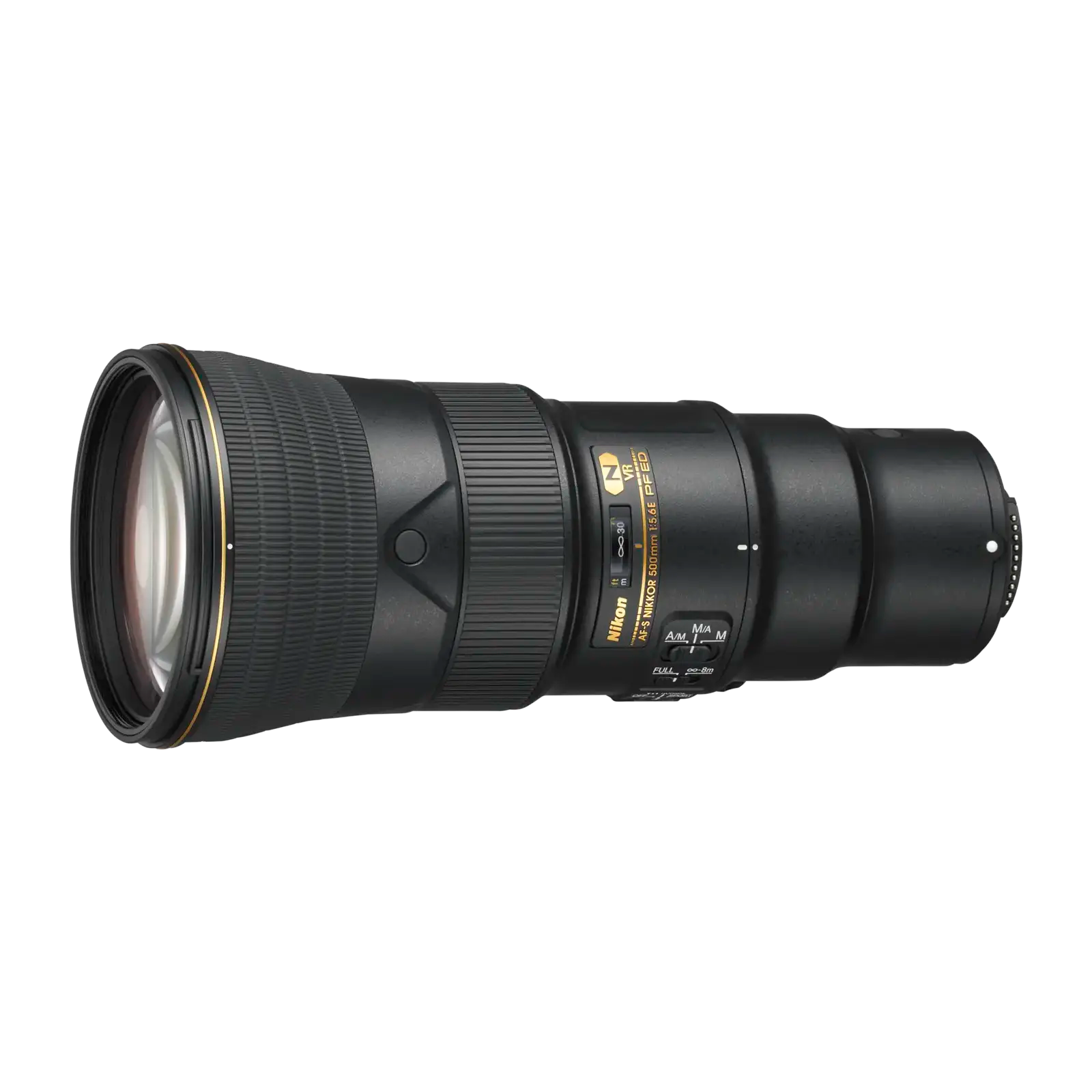Product Description
Nikon AF-S Nikkor 500mm f5.6 E PF ED VR - Super-Telephoto Lens
The Nikon 500mm f/5.6 E PF ED VR AF-S Super-Telephoto Lens redefines super-telephoto photography with its compact and lightweight design, made possible by the innovative Phase Fresnel (PF) lens element. This lens combines exceptional reach with a portable form factor, making it ideal for handheld shooting and a wide range of telephoto applications.

Key Features:
- Focal Length: 500mm
- Aperture Range: f/5.6 to f/32
- Phase Fresnel Element: Reduces lens size and weight while maintaining optical performance
- Extra-Low Dispersion (ED) Elements: Three ED elements and one PF element minimise chromatic aberrations and colour fringing for sharp, clear images
- Coatings: Nano Crystal Coat and Super Integrated Coating to reduce lens flare and ghosting, ensuring clear and vibrant images
- Fluorine Coating: Protects the lens from dust, moisture, and smudging
- Autofocus System: Silent Wave Motor (SWM) provides fast, near-silent autofocus with full-time manual focus override
- Vibration Reduction (VR): Four-stop image stabilization with Sport and Tripod modes for sharp images in various shooting conditions

Exceptional Optical Performance:
- High Clarity and Sharpness: The Phase Fresnel and ED elements work together to deliver outstanding sharpness and contrast, with minimal chromatic aberrations. The lens performs exceptionally well even with the TC-14E III AF-S teleconverter attached.
- Image Quality: Nano Crystal and Super Integrated Coatings significantly reduce flare and ghosting, while the fluorine coating guards the lens against environmental elements, ensuring high-quality images in challenging conditions.

Advanced Features:
- Vibration Reduction (VR): Provides up to four stops of stabilization, ideal for handheld shooting, with dedicated Sport Mode for tracking fast-moving subjects and Tripod Mode to suppress vibrations when using a tripod.
- Silent Wave Motor (SWM): Offers swift and quiet autofocus, making it suitable for both still photography and video recording. The internal focusing design maintains the lens's length and contributes to faster focusing speeds.
- Electromagnetic Diaphragm: Enhances exposure control stability, particularly beneficial during high-speed continuous shooting.

Compatibility:
- Camera Compatibility: Designed for FX-format Nikon F-mount cameras, this lens is also compatible with DX models, providing a 750mm equivalent focal length. It is also compatible with Nikon Z7/Z6 using the FTZ adapter and Nikon 1 series cameras with the FT-1 adapter.
- Teleconverters: Compatible with optional AF-S Teleconverter TC-14, TC-17, and TC-20 for extended reach.

Robust Build:
- Weather-Resistant Construction: The lens is built to withstand dust and moisture, making it reliable in various shooting conditions.
- Lightweight Design: Despite its super-telephoto reach, the lens’s PF element allows for a significantly reduced size and weight, making it more portable and easier to handle.

Ideal For:
The Nikon 500mm f/5.6 E PF ED VR AF-S Super-Telephoto Lens is perfect for wildlife, sports, and nature photographers who require a long focal length in a more manageable and hand-holdable size. Its advanced optical design ensures sharp, clear images, while its versatile features and robust build make it a reliable choice for challenging shooting environments.

Specifications:
- Focal Length: 500mm
- Maximum Aperture: f/5.6
- Minimum Aperture: f/32
- Angle of View: 5° for FX-format cameras
- Minimum Focusing Distance: 3.6 meters
- Lens Construction: 19 elements in 13 groups
- Filter Size: 95mm
- Weight: Approx. 1460g

The Nikon 500mm f/5.6 E PF ED VR AF-S Super-Telephoto Lens offers unparalleled reach in a compact and lightweight package, making it a top choice for capturing distant subjects with exceptional clarity and precision.

Payment & Security
Your payment information is processed securely. We do not store credit card details nor have access to your credit card information.




















